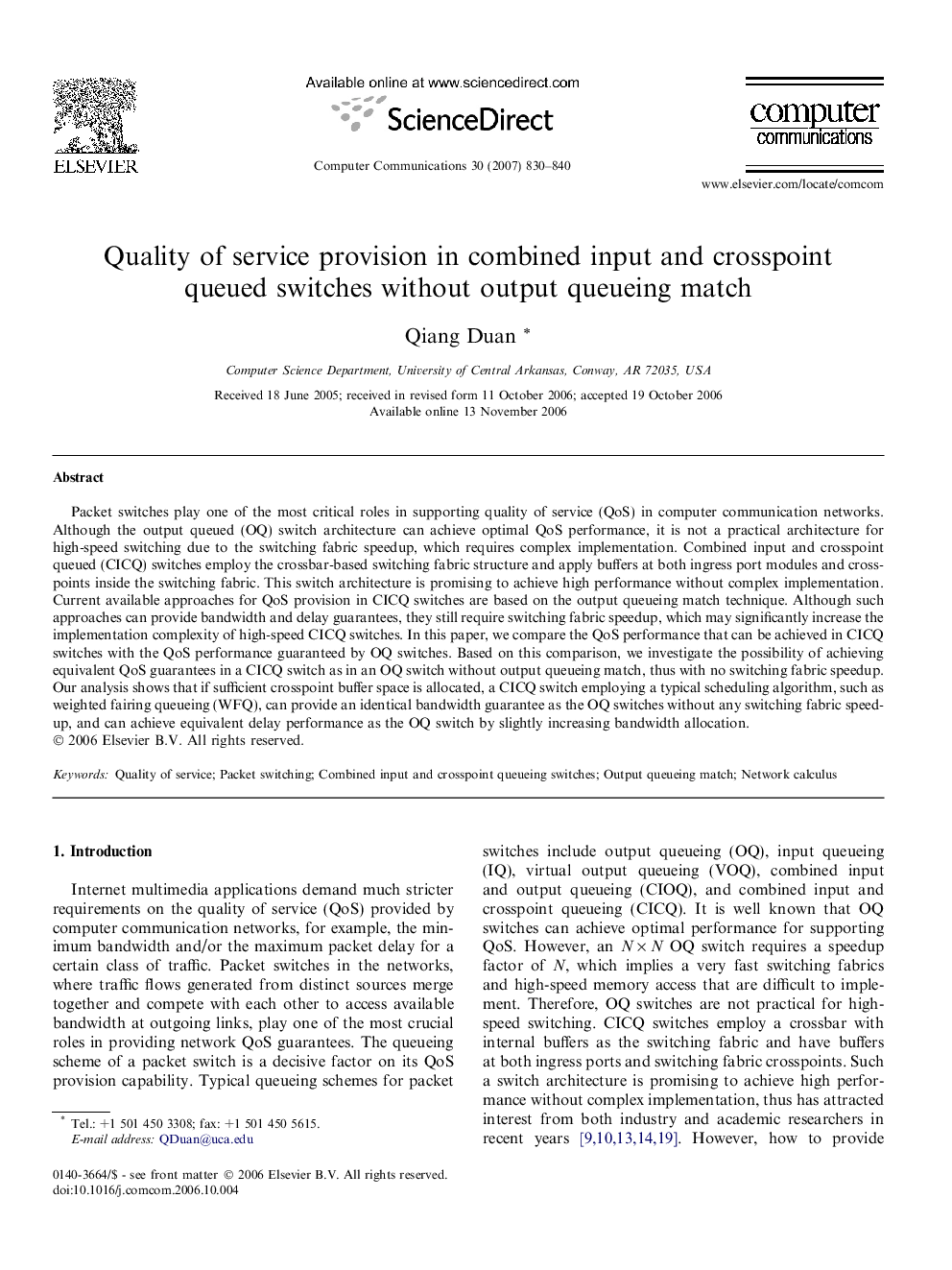| کد مقاله | کد نشریه | سال انتشار | مقاله انگلیسی | نسخه تمام متن |
|---|---|---|---|---|
| 450550 | 693924 | 2007 | 11 صفحه PDF | دانلود رایگان |

Packet switches play one of the most critical roles in supporting quality of service (QoS) in computer communication networks. Although the output queued (OQ) switch architecture can achieve optimal QoS performance, it is not a practical architecture for high-speed switching due to the switching fabric speedup, which requires complex implementation. Combined input and crosspoint queued (CICQ) switches employ the crossbar-based switching fabric structure and apply buffers at both ingress port modules and crosspoints inside the switching fabric. This switch architecture is promising to achieve high performance without complex implementation. Current available approaches for QoS provision in CICQ switches are based on the output queueing match technique. Although such approaches can provide bandwidth and delay guarantees, they still require switching fabric speedup, which may significantly increase the implementation complexity of high-speed CICQ switches. In this paper, we compare the QoS performance that can be achieved in CICQ switches with the QoS performance guaranteed by OQ switches. Based on this comparison, we investigate the possibility of achieving equivalent QoS guarantees in a CICQ switch as in an OQ switch without output queueing match, thus with no switching fabric speedup. Our analysis shows that if sufficient crosspoint buffer space is allocated, a CICQ switch employing a typical scheduling algorithm, such as weighted fairing queueing (WFQ), can provide an identical bandwidth guarantee as the OQ switches without any switching fabric speedup, and can achieve equivalent delay performance as the OQ switch by slightly increasing bandwidth allocation.
Journal: Computer Communications - Volume 30, Issue 4, 26 February 2007, Pages 830–840